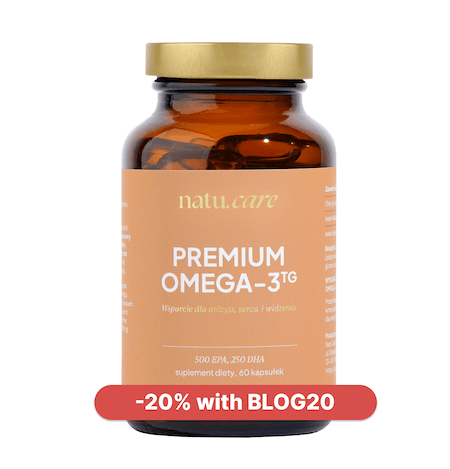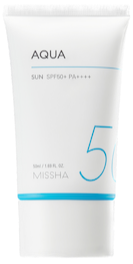Acne rosacea: causes, symptoms, treatment, cosmetics, diet
Find out how rosacea manifests itself and what to do to say goodbye to it forever.


Learn more about our editorial process
.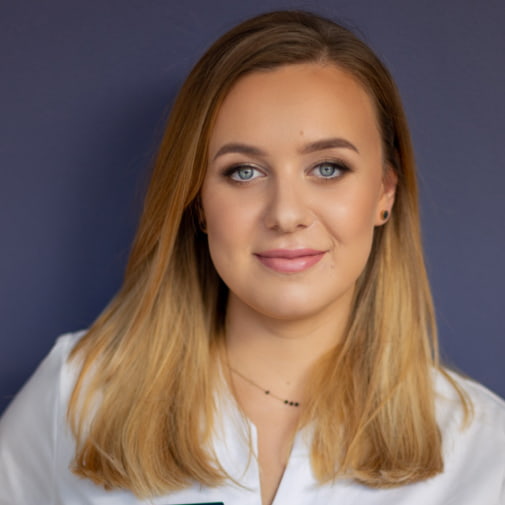

Learn more about our editorial process
.

Learn more about our editorial process
.

Learn more about our editorial process
.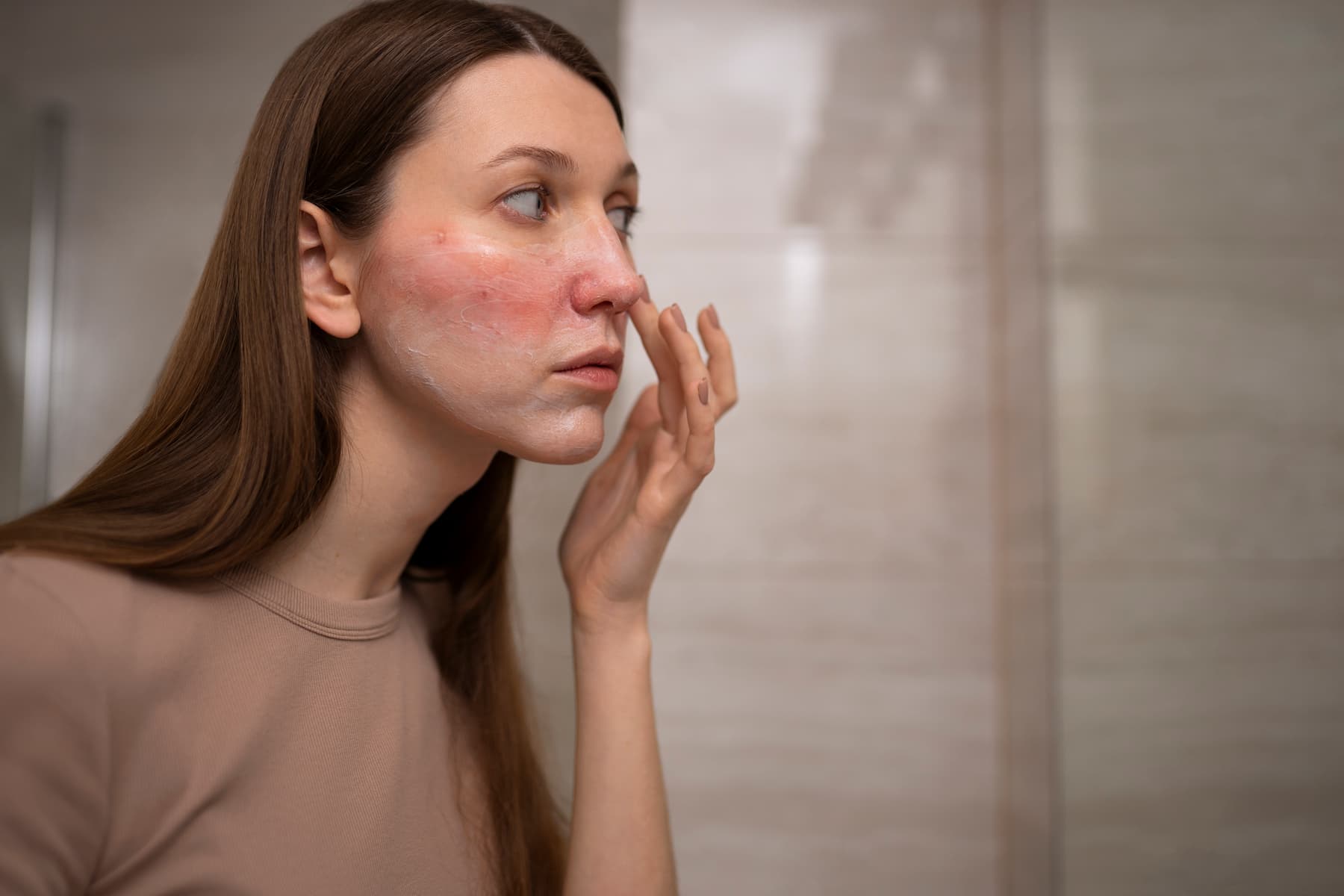
Why you can trust us
Articles on Natu.Care are written based on scientific research, data from government websites and other reliable sources. The texts are written in cooperation with doctors, nutritionists and other health and beauty experts. Articles are reviewed before publication and during significant updates.
.Learn more about our editorial process
.Information about advertisements
Content on Natu.Care may contain links to products from the sale of which we may receive a commission. When creating content, we adhere to high editorial standards and take care to be objective about the products discussed. The presence of affiliate links is not dictated by our partners, and we select the products we review ourselves completely independently.
.Learn more about our terms and Conditions
.Rummies are considered synonymous with health. Well, unless they accompany you all day and are criss-crossed with visible blood vessels. Or sprinkled with red papules and pimples.
Rasal acne is the bane of adults. It most commonly affects fair-skinned people between the ages of 35 and 50. In addition to the red areas on the face, this ailment often brings with it additional attractions: dilated blood vessels, pimples, papules and even infiltrations and thickening of the epidermis. Fortunately, rosacea can be effectively treated.
.From this article you will learn:
- What rosacea is and what types it is. .
- What are the causes and symptoms of its occurrence. .
- How to effectively treat rosacea. .
- How to care for skin affected by this condition. .
- How diet affects the skin condition in rosacea. .
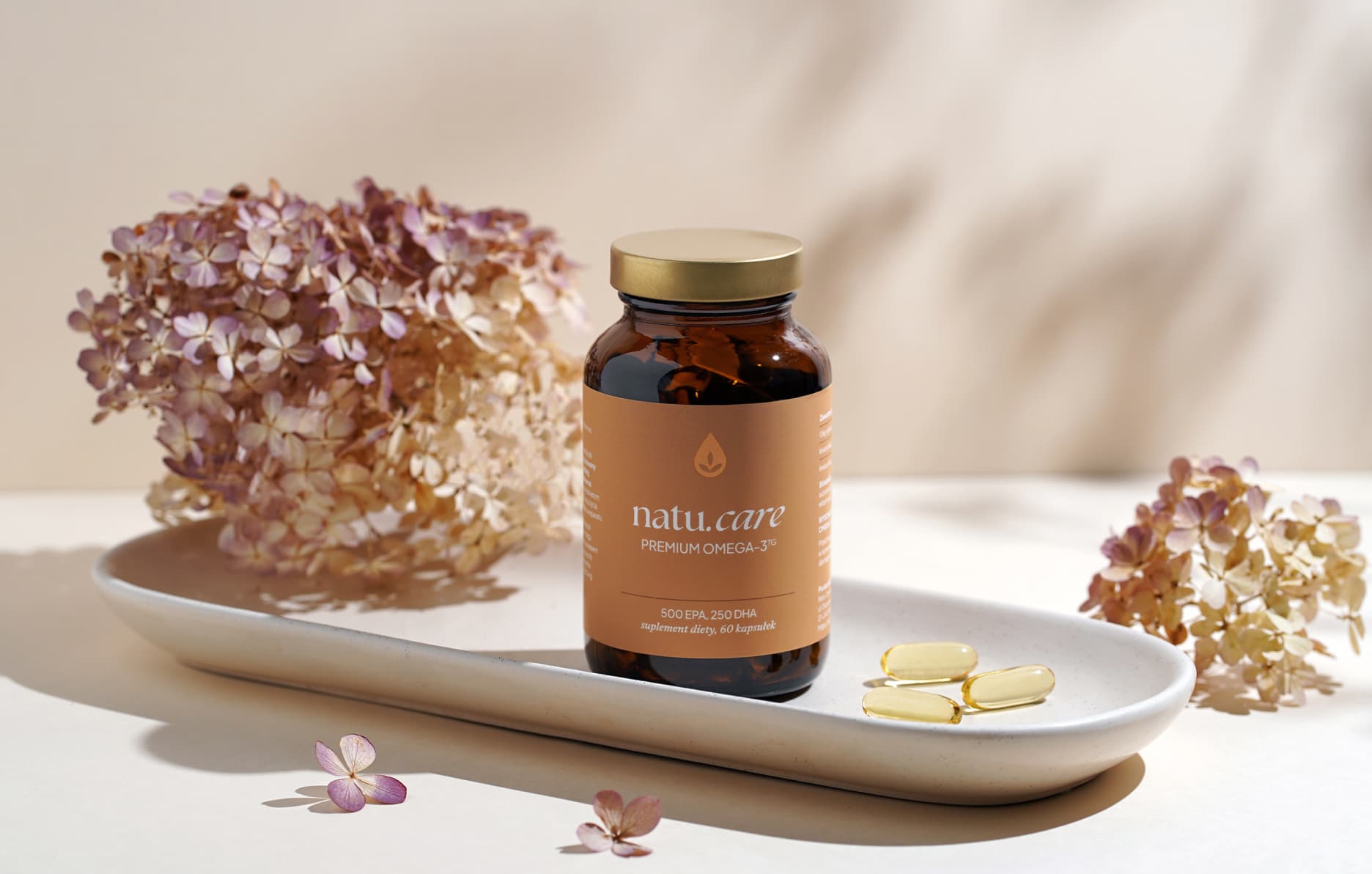
Sprawdź, za co pokochały go tysiące klientek Natu.Care Premium Omega-3ᵀᴳ -15% z kodem BLOG15
Natu.Care Omega-3ᵀᴳ Premium
Natu.Care Omega-3ᵀᴳ Premium dla zdrowia serca, mózgu i odporności. Najlepsza przyswajalność. Optymalna dawka 750 mg. Przebadana przez niezależne laboratorium.
Zobacz więcej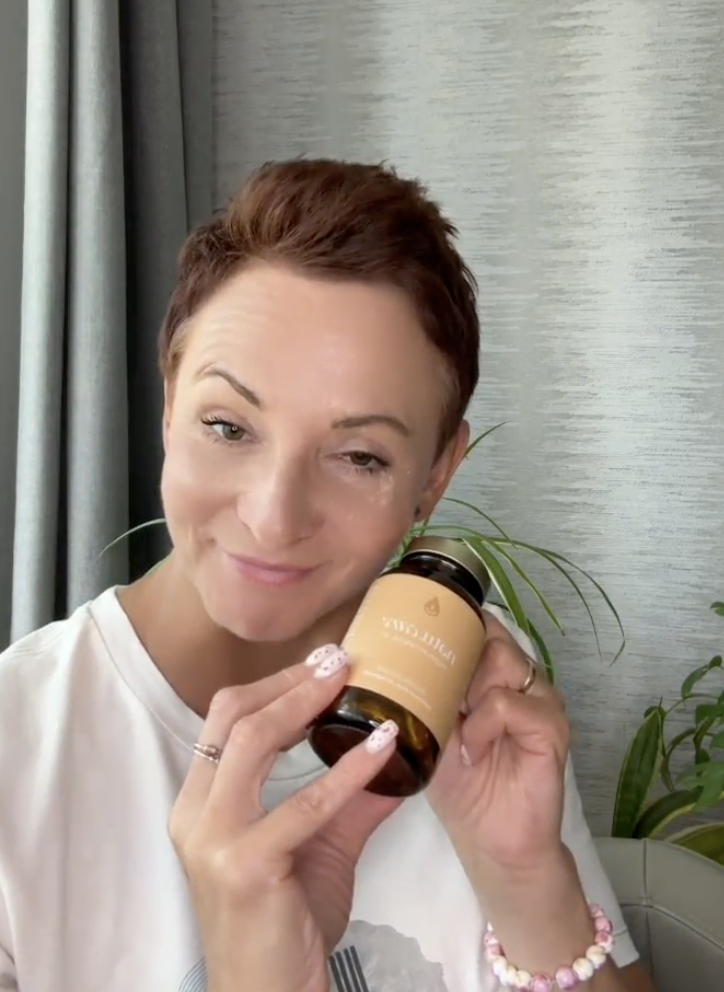
Produkt ma super skład, transparentną etykietę i co dla mnie jest ważne – małe kapsułki do połknięcia. Nie ma też nieprzyjemnego efektu odbijania rybą, który miałam spożywając inne produkty. Widzę znaczną poprawę odporności. Polecam!@Kasia P.
See also:
.What is rosacea?
.Rosacea (Latin) acne rosacea) is a chronic facial skin condition that is increasingly recognised as an autoimmune disease. It is characterised by recurrent facial erythema, often accompanied by papules and pustules and so-called spider veins, or dilated blood vessels. The most common areas of erythema include the cheeks, nose, chin and foreheadand.
According to estimates, rosacea can affect between 2% and as much as 22% of the global population, with the prevalence in Europe described (depending on the source) as 10-20% . People with a fair complexion (skin phototypes I and II), as well as light eyes and hair are more predisposed to the disease.
What does rosacea look like?
.Rosaceous acne looks like either red patches or severe flushing. Depending on its variety, the spots may be accompanied by dilated capillaries, arranged in characteristic purple spider veins, or red papules and pustules. In its advanced stage, the skin surface may resemble a heavily reddened orange peel in appearance.
Unmedicated rosacea can lead to hypertrophy of the sebaceous glands ending in abnormal tissue growth in the form of tumours - rhinophyma, or cauliflower nose..
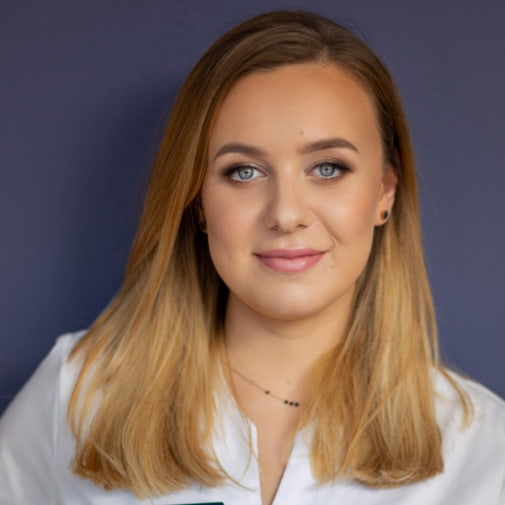 .
.
Katarzyna SrebrCosmetologist
Types of rosacea
.Rosaceous acne can be divided according to the accompanying skin changes. There are formsand:
- Rumoral with dilated capillaries (telangiectasias) - this is most common in the early stages of the disease and affects people with vascular skin.
- Pustular-papular - which, as the name suggests, is accompanied by pimples and red papules.
- Narrow - characteristic of older people. The skin then becomes thickened and flecked in certain parts of the face.
- Granulomatous - the face shows granulomas, which are accumulations of cells of the immune system.
Interesting fact
.There is also a form of rosacea that affects... the eyes (sic!). It manifests as chronic redness of the eyelids and eyeballs, as well as burning and pinching. It can often be confused with, for example, dry eye syndromeand.
Causes of rosacea
.The causes of rosacea are not fully understood. Among the most common factors, researchers listand:
- genetic predisposition, .
- immune system disorders, .
- vascular and neurovascular hypersensitivity,
- microbial disorders,
- inflammatory disorders, .
- microorganisms, .
- environmental conditions (prolonged sun exposure, chronic stress), .
A 2018 study suggests a link between the occurrence of rosacea and the malfunctioning thyroid gland, while other sources see the cause of the condition in Helicobacter Pylori (yes, it's that bacteria from stomach ulcers)and.
Whatever is responsible for the aetiology of the disease itself, there are certain factors that exacerbate or can trigger rosacea symptoms.
People affected acne rosacea should avoid:
- exposure to UV radiation (especially sunlight), .
- drinking alcohol, .
- consumption of spicy and indigestible food,
- exposure to alcohol,
- exposure to alcohol,
- exposure to alcohol,
- consumption of spicy and indigestible food
- chronic stress,
- intensive physical exertion,
- inflammation of the skin.
- intensive physical exertion,
- healthy and unhealthy conditions, and
- high temperature fluctuations,
- high temperature fluctuations
- aggressive skin care, .
- use of certain medications (e.g. glucocorticosteroid ointments), .
- use of saunas,
- exposure to chlorine,
- exposure to other substances.
- contact with chlorinated water (e.g. in a swimming pool),
- exposure to water
- taking large doses of vitamin B6 and B12.
Symptoms of rosacea
.The main and most typical symptom of rosacea is erythema, or red patches or infiltrates, appearing on the face, particularly in the central areas of the face: cheeks, nose, forehead or chin. Redness may also involve the eyelidsand.
The flare-up of the erythema (as well as the other symptoms), intensifies when an irritant is present, such as when being in high temperatures or after eating something spicy. Occasionally, rosacea can also worsen after intense exercise or other skin conditions, such as herpesand.
Other symptoms depend on the type of rosacea you are dealing with. In addition to erythema rosacea can manifestand:
.- dilated capillaries, .
- red papules and pustules, .
- thickening of the epidermis, .
- fibrosis of the hair follicles,
- inflammation of the skin.
- zarcomas, .
Treatment of rosacea
.Rosaceous acne is a chronic skin condition that requires a visit to a dermatologist. Your doctor will determine the type of acne you are dealing with and will be able to prescribe prescription medication if necessary. Skin with rosacea will also require regular check-ups at your doctor's office.
To manage the symptoms of rosacea, a holistic approach is required. There are no wonder pills that you just need to ingest to have peace of mind from this ailment. To free yourself from the annoying redness on your face, you need to review your skincare routine and cosmetics that you use on a daily basis. And that includes skincare as well as colour.
Changes will also likely need to be made to your diet and sometimes even habitsand.
Medicines and ointments for rosacea
.Specialised creams and ointments that you can get at the pharmacy usually contain methronidazole. This is a drug that shows anti-inflammatory and antibacterial effects. In addition, it also helps to reduce rednessand.
Another popular ingredient is azelaic acid, used in the papulopustular form of rosacea. It has antioxidant and anti-inflammatory effectsand.
There are also antibiotics for rosacea available in pharmacies, in the form of ointments, creams and gels - for topical application. A dermatologist may prescribe these if purulent inflammation has appeared on the face. Among the most commonly used are erythromycinand.
.In some cases, antibiotics or other medications may need to be taken orally. Such rosacea tablets should be taken strictly as directed by a dermatologist. The most common substances used in them are antibiotics from the tetracycline group - usually this will be doxycycline.
Important
Antibiotics in any form (both oral and topical) should always be prescribed by a doctor. Never use them arbitrarily, even if they sometimes helped you for the same thing. Your skin condition changes, so only a specialist can determine if you still need antibiotic therapy.
Treatments for rosacea
.Before you are tempted by the offerings of beauty clinics and cosmetic surgeries, be sure to consult a dermatologist for any treatment. Skin with rosacea is extremely sensitive and not every stage of the condition will warrant cosmetic treatments.
One of the most effective treatments for rosacea is laser. It will be particularly useful in treating erythema and dilated blood vessels (spider veins)and. The laser beam will 'close' the dilated blood vessels so they are no longer visible and the redness disappears.
You need to know, however, that despite laser correction of spider veins, these lesions may reappear when the symptoms of the condition worsen.
Much depends on the skin condition you are dealing with. A laser will only work on large telangiectasias, which are not always present at all. IPL is used to reduce erythema, although the skin needs to be properly prepared for this treatment, as the procedure itself emits quite high temperatures - which are not beneficial..
 .
.
Katarzyna SrebrCosmetologist
"Working with people affected by rosacea balances between maximising skin tightening and strengthening blood vessel walls, and this alone often already produces fantastic results in terms of erythema reduction.
.The erythema itself may be due not just to the fact that the vessels are irritated or dilated, but to the insufficient thickness of the dermis and epidermis - if the skin is thin, it just sheds. So work is also being done to thicken and strengthen its layers." - adds a cosmetology specialist.
For the papulopustular and pustular forms of rosacea, the use of acids may also make sense. The best known is the peeling Azelaic acid, which is helpful in combating pustules. Other acids used by cosmetologists for rosacea complexions includeand:
- Phytic acid - has a gentle exfoliating action and is suitable for vascular complexions.
- Malic acid - its molecules are quite large, so it does not penetrate deeply into the layers of the skin.
- Lactobionic acid - one of the mildest acids available in cosmetology. It can even be used with steroid treatments.
- Shikimic acid - has anti-inflammatory and analgesic effects. It is also able to reduce redness.
Cosmetic forums are teeming with golden advice about using acids at home. Mhm. It's just a pity they aren't accompanied by pictures of people who have suffered burns through it. Yes - chemical burns. Respect your face (you only have one) and leave the fun of acids to the experts.
Important
Use chemical (acid) peels only in specialist beauty salons. Never do them at home, on your own! If you suffer from rosacea, also consult your dermatologist before such a treatment.
Care for skin with rosacea
.Skin affected by rosacea is particularly sensitive (one could even say hypersensitive) and often vascular. This is why it is best to establish your skin care rituals in consultation with a dermatologist and cosmetologist.
.There is no one-size-fits-all skin care regime for rosacea. It will be slightly different for each type of this ailment. However, it should certainly be based on soothing the erythema and quieting the skin.
Some skincare tricksand:
may also prove helpful some skincare tricksand:.- .
- Always cleanse your face in two stages (make-up removal or sebum removal + face wash with water rinse cosmetics).
- Use a disposable paper towel for wiping (this is the most antibacterial solution). .
- Wash your face with lukewarm water. .
- Avoid mechanical scrubs and strong rubbing of the skin. .
- Use lotions and gels that do not pinch the eyes. If something is gentle enough not to irritate such a sensitive area, it shouldn't irritate your skin either.
- If your skin is not irritated, it should be.
- If you make up on a daily basis, take a minimum of one day break a week from make-up. Your skin will have a chance to breathe and to rest from the extra layer of cosmetics.
- Remember to change your bedding regularly - especially your pillowcase. This is the ideal environment for any microbial growth. .
Cosmetics for rosacea
.As you already know, it is best to discuss cosmetics for rosacea skin care with a dermatologist. Your doctor can tell you the specific brand of products or active ingredients to look for in the ingredients. He or she will also tell you what to avoid.
However, you can certainly bet on pH-balanced cleansers (that won't over-dry your skin), decent sunscreens (SPF 30 is the minimum to use in the autumn/winter season, choose SPF 50 in summer) and moisturising creamsand.
.Product description
The dietary supplement contains omega-3ᵀᴳ, or omega-3 acids in the form of trójglyceridesów. Scientific studies suggest that this form of fatty acidsós up to 2 times better absorbed than the estersós present in many dietary supplements on the market. This means that you are assured of their effectiveness and of supplying yourself with valuable omega acids.
Fatty acids omega-3 are derived from wild anchovy oil. It is a rich source of healthy fats that are essential for the health of the cardiovascular, immune and nervous systems, as well as the proper function of vision, joints muscles.
Scientific research suggests that wild anchovies are a good source of healthy fats.
Scientific research also suggests that an adequate intake of omega-3 fatty acidsós protects against and supports the treatment of depression and anxiety disorders. In addition, omega-3s influence the hydration and appearance of the skinóry and support healthy sleep.
.
The formula contains a total of 750 mg of EPA+DHA acidsós, which is three times higher than the recommended minimum of 250 mg for the Polish population. Omega-3 TG Premium has studies indicating that its TOTOX is 9, which is a very good result.
Supplementation of omega-3 fatty acidsóis recommended for anyone who does not eat 1–2 portions (approximately 300 g) of oily fish per week. Children during growth, seniors, physically active people, vegans and vegetarians, as well as patients undergoing cardiovascular treatment and prevention of heart disease also have an increased need.
Pros and cons
The dietary supplement contains omega-3ᵀᴳ, or omega-3 acids in the form of trójglyceridesów. Scientific studies suggest that this form of fatty acidsós up to 2 times better absorbed than the estersós present in many dietary supplements on the market. This means that you are assured of their effectiveness and of supplying yourself with valuable omega acids.
Fatty acids omega-3 are derived from wild anchovy oil. It is a rich source of healthy fats that are essential for the health of the cardiovascular, immune and nervous systems, as well as the proper function of vision, joints muscles.
Scientific research suggests that wild anchovies are a good source of healthy fats.
Scientific research also suggests that an adequate intake of omega-3 fatty acidsós protects against and supports the treatment of depression and anxiety disorders. In addition, omega-3s influence the hydration and appearance of the skinóry and support healthy sleep.
.
The formula contains a total of 750 mg of EPA+DHA acidsós, which is three times higher than the recommended minimum of 250 mg for the Polish population. Omega-3 TG Premium has studies indicating that its TOTOX is 9, which is a very good result.
Supplementation of omega-3 fatty acidsóis recommended for anyone who does not eat 1–2 portions (approximately 300 g) of oily fish per week. Children during growth, seniors, physically active people, vegans and vegetarians, as well as patients undergoing cardiovascular treatment and prevention of heart disease also have an increased need.
Additional information
The dietary supplement contains omega-3ᵀᴳ, or omega-3 acids in the form of trójglyceridesów. Scientific studies suggest that this form of fatty acidsós up to 2 times better absorbed than the estersós present in many dietary supplements on the market. This means that you are assured of their effectiveness and of supplying yourself with valuable omega acids.
Fatty acids omega-3 are derived from wild anchovy oil. It is a rich source of healthy fats that are essential for the health of the cardiovascular, immune and nervous systems, as well as the proper function of vision, joints muscles.
Scientific research suggests that wild anchovies are a good source of healthy fats.
Scientific research also suggests that an adequate intake of omega-3 fatty acidsós protects against and supports the treatment of depression and anxiety disorders. In addition, omega-3s influence the hydration and appearance of the skinóry and support healthy sleep.
.
The formula contains a total of 750 mg of EPA+DHA acidsós, which is three times higher than the recommended minimum of 250 mg for the Polish population. Omega-3 TG Premium has studies indicating that its TOTOX is 9, which is a very good result.
Supplementation of omega-3 fatty acidsóis recommended for anyone who does not eat 1–2 portions (approximately 300 g) of oily fish per week. Children during growth, seniors, physically active people, vegans and vegetarians, as well as patients undergoing cardiovascular treatment and prevention of heart disease also have an increased need.
Expert opinion
The dietary supplement contains omega-3ᵀᴳ, or omega-3 acids in the form of trójglyceridesów. Scientific studies suggest that this form of fatty acidsós up to 2 times better absorbed than the estersós present in many dietary supplements on the market. This means that you are assured of their effectiveness and of supplying yourself with valuable omega acids.
Fatty acids omega-3 are derived from wild anchovy oil. It is a rich source of healthy fats that are essential for the health of the cardiovascular, immune and nervous systems, as well as the proper function of vision, joints muscles.
Scientific research suggests that wild anchovies are a good source of healthy fats.
Scientific research also suggests that an adequate intake of omega-3 fatty acidsós protects against and supports the treatment of depression and anxiety disorders. In addition, omega-3s influence the hydration and appearance of the skinóry and support healthy sleep.
.
The formula contains a total of 750 mg of EPA+DHA acidsós, which is three times higher than the recommended minimum of 250 mg for the Polish population. Omega-3 TG Premium has studies indicating that its TOTOX is 9, which is a very good result.
Supplementation of omega-3 fatty acidsóis recommended for anyone who does not eat 1–2 portions (approximately 300 g) of oily fish per week. Children during growth, seniors, physically active people, vegans and vegetarians, as well as patients undergoing cardiovascular treatment and prevention of heart disease also have an increased need.
MISSHA All Around Safe Block Aqua Sun
Product description
Soothing sunscreen provides a high level of protection against UVA and UVB rays. Its light, gel-like texture and moisturising properties make it an ideal option under makeup.
The cosmetic gives a cooling sensation, whichós very pleasant on hot days – especially when sunbathing, on a sunny beach.
Pros and cons
Soothing sunscreen provides a high level of protection against UVA and UVB rays. Its light, gel-like texture and moisturising properties make it an ideal option under makeup.
The cosmetic gives a cooling sensation, whichós very pleasant on hot days – especially when sunbathing, on a sunny beach.
Additional information
Soothing sunscreen provides a high level of protection against UVA and UVB rays. Its light, gel-like texture and moisturising properties make it an ideal option under makeup.
The cosmetic gives a cooling sensation, whichós very pleasant on hot days – especially when sunbathing, on a sunny beach.
User review
Soothing sunscreen provides a high level of protection against UVA and UVB rays. Its light, gel-like texture and moisturising properties make it an ideal option under makeup.
The cosmetic gives a cooling sensation, whichós very pleasant on hot days – especially when sunbathing, on a sunny beach.
Veoli Botanica HAVE A NICE FACE, day cream
Product description
Solid, deeply moisturising day cream. It has protective and soothing properties. It supports the skinós natural protective barrier. Your skin will be hydrated and relaxed.
.Thanks to its natural antioxidantós content, it prevents the formation of wrinkles and reduces oxidative stress on the skinóry.
The cream has a pleasant, fairly rich texture. It absorbs quickly and does not leave a visible layer on the skinóy. It is perfect as a make-up base.
The cream has a pleasant, rather rich texture.
Pros and cons
Solid, deeply moisturising day cream. It has protective and soothing properties. It supports the skinós natural protective barrier. Your skin will be hydrated and relaxed.
.Thanks to its natural antioxidantós content, it prevents the formation of wrinkles and reduces oxidative stress on the skinóry.
The cream has a pleasant, fairly rich texture. It absorbs quickly and does not leave a visible layer on the skinóy. It is perfect as a make-up base.
The cream has a pleasant, rather rich texture.
Additional information
Solid, deeply moisturising day cream. It has protective and soothing properties. It supports the skinós natural protective barrier. Your skin will be hydrated and relaxed.
.Thanks to its natural antioxidantós content, it prevents the formation of wrinkles and reduces oxidative stress on the skinóry.
The cream has a pleasant, fairly rich texture. It absorbs quickly and does not leave a visible layer on the skinóy. It is perfect as a make-up base.
The cream has a pleasant, rather rich texture.
User review
Solid, deeply moisturising day cream. It has protective and soothing properties. It supports the skinós natural protective barrier. Your skin will be hydrated and relaxed.
.Thanks to its natural antioxidantós content, it prevents the formation of wrinkles and reduces oxidative stress on the skinóry.
The cream has a pleasant, fairly rich texture. It absorbs quickly and does not leave a visible layer on the skinóy. It is perfect as a make-up base.
The cream has a pleasant, rather rich texture.
The best cosmetics for rosacea should be free of irritants (such as preservatives and drying alcohols) and instead contain ingredients that soothe irritation and strengthen blood vessels. Anything that nourishes the complexion and strengthens its natural hydrolipidic barrierand.
will also be included. .Engredients to look for in cosmetics for rosacea skin :
.- vitamin B3 (usually in the form of niacinamide), .
- vitamin C, .
- vitamin E, .
- vitamin K, .
- allantoin, .
- rutin, .
- antioxidants,
- D-panthenol, .
- diosmin, .
- bisabolol, .
- lipids, peptides and ceramides, .
- adaptogens and bioflavonoids, .
- dextran sulphate, .
- pre- and probiotics, .
- red and brown algae, .
- plant extracts (e.g. from ruscus, chamomile, arnica montana, Centella Asiatica, horse chestnut or ginkgo biloba).
Diet for rosacea
.The mainstay of the rosacea diet is its anti-inflammatory effect and keeping blood glucose stable. When putting together a menu for such a person, we introduce a diet similar to that for insulin resistance. Lots of vegetables as a base, nuts and lean dairy products all help us to lower the glycaemic load of meals..
 .
.
Julia SkrajdaDietitian
.Diet has a not inconsiderable impact on the condition of skin affected by rosacea. This is for two reasons.
.Firstly, a healthy and rich in vitamins menu will positively affect the condition of blood vessels. It will help to strengthen and seal their walls, as well as ensure proper blood pressure. All this is important in preventing the appearance of erythema and spider veins. A well-nourished complexion is also simply stronger.
.The second aspect is the so-called triggers. These are foods, or groups of foods, that can cause rosacea symptoms to resume in remission or exacerbate existing ones.
Triggers.
According to a 2023 research review, triggers of rosacea symptoms includeand:
- sweets (especially chocolate), .
- figs, .
- bananas, .
- plums, .
- cheese, .
- yoghurt, .
- cream, .
- soy sauce, .
- aubergine, .
- spinach, .
- wheat, .
- peas, .
- beans, .
- powerful, hot coffee and tea, .
- alcohol, .
- sweeteners added to beverages, .
As you can see, some of these foods are healthy vegetables and fruits that contain plenty of valuable nutrients. Do you necessarily have to give up the whole list? No. Some of these things don't have to be bad for you at all.
For proof, let's take a look at the list.
For evidence, consider the research included in the aforementioned review, which suggests that caffeine in coffee exacerbated rosacea symptoms in some patients and reduced the risk of rosacea in othersand.
.However, it is sensible to keep an eye on your skin condition and be aware of factors that may have caused irritation. Also avoid very hot food and spicy or heavily processed and hard to digest foods (a double no to kebabs that bake twice).
Products rich in saturated fatty acids are discouraged, including yellow cheese, butter, margarine, fatty meat, processed meats. The diet should be based on lean meat without skin, fish and eggs..
 .
.
Julia SkrajdaDietitian
.General guidelines for composing a menu for people struggling with rosacea recommend that the foods consumed should be easily digestible, alkaline and rich in fibre and vitamins C, B2 and B3and.
It is also worth seeking advice from a good nutritionist who specialises in immunodiets..
 .
.
Katarzyna SrebrCosmetologist
Research from 2013 and 2022 suggests that supplementation of omega-3 acids may contribute to the alleviation of inflammation and prevention of telangiectasia (spider veins)and.
{ product:6CizQVnfcf40wNfjQkeJ5o }}
.Bananas vs rosacea
.Unfortunately, although very tasty and full of potassium, bananas are not recommended for rosacea sufferers. The fruit has a fairly high glycaemic index, a lot of sugar and, on top of that, histamine, which can aggravate erythemaand.
.Fruits mainly recommended for rosacea are berries, raspberries, strawberries, but also citrus..
 .
.
Julia SkrajdaDietitian
.
Sprawdź, za co pokochały go tysiące klientek Natu.Care Premium Omega-3ᵀᴳ -15% z kodem BLOG15
Natu.Care Omega-3ᵀᴳ Premium
Natu.Care Omega-3ᵀᴳ Premium dla zdrowia serca, mózgu i odporności. Najlepsza przyswajalność. Optymalna dawka 750 mg. Przebadana przez niezależne laboratorium.
Zobacz więcej
Produkt ma super skład, transparentną etykietę i co dla mnie jest ważne – małe kapsułki do połknięcia. Nie ma też nieprzyjemnego efektu odbijania rybą, który miałam spożywając inne produkty. Widzę znaczną poprawę odporności. Polecam!@Kasia P.
See also:
.Summary
.- Rosaceous acne is a chronic skin condition that manifests as erythema on the face.
- Depending on the type of rosacea, additional symptoms may include papules, pustules, dilated blood vessels, granulomas, or thickening and hyperplasia of the epidermis.
- Racne rosacea is a chronic skin condition that manifests itself in the face.
- Rosaceous acne requires dermatological treatment, appropriate care applied on a daily basis and elimination of factors that may be triggers. .
- Cosmetics used in skin care should be moisturising and soothing. .
- A well-digested diet is of paramount importance in the fight against this ailment. .
FAQ
.How do you treat rosacea?
.Treating rosacea starts with a visit to a dermatologist. Only your doctor can prescribe oral medications (e.g. antibiotics) or topical medications (creams, gels) to reduce redness and inflammation. Also consult your dermatologist about laser therapy or acid treatments, which can effectively reduce redness and visible blood vessels.
Avoid rosacea triggers such as high temperatures, spicy food, alcohol or stress. Use specialist cosmetics for rosacea skin. Choose products with gentle formulas, without alcohol, fragrances or other potentially irritating ingredients.
What is rosacea?
.Rosacea, or actually acne rosacea is the Latin name for rosacea, a skin condition characterised by erythema on the face. It is also often accompanied by dilated blood vessels (spider veins) and red papules and pustules. The basis for combating this condition is dermatological treatment, proper facial care and a healthy diet.
What vitamins for rosacea?
.For rosacea, vitamins that act antioxidant, anti-inflammatory and protective on blood vessels will help. Consume foods rich in vitamin B2, B3 and C. In cosmetics also look for vitamin E and K. Inflammation and erythema can also be helped by omega-3 acids.
Does rosacea itch?
.Rosacea can cause itching, burning and even pain, although these are not typical symptoms. If you are experiencing itching, it could be the result of another ailment or simple dryness of the skin.
When dealing with rosacea, it is important to avoid triggers that cause flare-ups, such as extreme temperatures, spicy condiments, alcohol or stress. Use mild cosmetics for facial skin care. Also always use creams with UV protection, as sunlight can worsen symptoms.
Consult a dermatologist who can recommend the appropriate treatment. It is important to understand that rosacea is a chronic skin condition that requires ongoing monitoring and treatment.
Treat your rosacea.
Can rosacea be in the eyes?
.Yes, there is an ocular variant of rosacea. The condition is very similar to other ophthalmic ailments, such as dry eye syndrome or conjunctivitis, for example. Ocular rosacea manifests as redness of the eyelids and eyeballs, which look as if they are heavily bloodshot.
What not to eat with rosacea?
.People suffering from rosacea are especially advised against consuming alcohol, hot, very spicy and hard to digest foods. In addition, rosacea symptoms may be aggravated by foods rich in histamine, i.e. bananas, prunes, spinach, aubergines, certain legumes and dairy products.
Is rosacea an autoimmune disease?
.To date, scientists have not been able to determine the exact causes of rosacea development. However, recent research suggests that it may be related to dysfunction thyroid gland and more and more people are recognising it as an autoimmune disease. Other possible causes include bacteria, mites and even a disruption of the body's microbiota.
Sources
.See all
.Berksoy Hayta, S., Guner, R., Cam, S., & Akyol, M. (2018). ROSACEA IS ASSOCIATED WITH THYROID AUTOIMMUNITY: A CASE CONTROL STUDY. Acta Endocrinologica (Bucharest), 14(2), 248-251. https://doi.org/10.4183/aeb.2018.248
Farshchian, M., & Daveluy, S. (2023). Rosacea. In StatPearls. StatPearls Publishing. http://www.ncbi.nlm.nih.gov/books/NBK557574/
Mikkelsen, C. S., Holmgren, H. R., Kjellman, P., Heidenheim, M., Karppinnen, A., Bjerring, P., & Huldt-Nystrøm, T. (2016). Rosacea: A clinical review. Dermatology Reports, 8(1), Article 1. https://doi.org/10.4081/dr.2016.6387
Nowicka, D., Chilicka, K., Dzieńdziora-Urbińska, I., & Szyguła, R. (2023). Skincare in Rosacea from the Cosmetologist's Perspective: A Narrative Review. Journal of Clinical Medicine, 12(1), Article 1. https://doi.org/10.3390/jcm12010115
Oliveira, C. M. M. de, Almeida, L. M. C., Bonamigo, R. R., Lima, C. W. G. de, & Bagatin, E. (2020). Consensus on the therapeutic management of rosacea - Brazilian Society of Dermatology. Anais Brasileiros de Dermatologia, 95, 53-69. https://doi.org/10.1016/j.abd.2020.08.001
Rahul Bhargava, P. K., & Rahul Bhargava, P. K. (2013). A randomised controlled trial of omega-3 fatty acids in dry eye syndrome. International Journal of Ophthalmology, 6(6), 811-816. https://doi.org/10.3980/j.issn.2222-3959.2013.06.13
Sharma, A., Kroumpouzos, G., Kassir, M., Galadari, H., Goren, A., Grabbe, S., & Goldust, M. (2022). Rosacea management: A comprehensive review. Journal of Cosmetic Dermatology, 21(5), 1895-1904. https://doi.org/10.1111/jocd.14816
.Shen, S., Yan, G., Cao, Y., Zeng, Q., Zhao, J., Wang, X., & Wang, P. (2023). Dietary supplementation of n-3 PUFAs ameliorates LL37-induced rosacea-like skin inflammation via inhibition of TLR2/MyD88/NF-κB pathway. Biomedicine & Pharmacotherapy, 157, 114091. https://doi.org/10.1016/j.biopha.2022.114091
van Zuuren, E. J., Arents, B. W. M., van der Linden, M. M. D., Vermeulen, S., Fedorowicz, Z., & Tan, J. (2021). Rosacea: New Concepts in Classification and Treatment. American Journal of Clinical Dermatology, 22(4), 457-465. https://doi.org/10.1007/s40257-021-00595-7
Zhang, H., Tang, K., Wang, Y., Fang, R., & Sun, Q. (2021). Rosacea Treatment: Review and Update. Dermatology and Therapy, 11(1), 13-24. https://doi.org/10.1007/s13555-020-00461-0
.Editorials
Meet the team

Cosmetologist
Cosmetologist and linergist with extensive experience working with clients with a wide range of skin health needs and concerns.

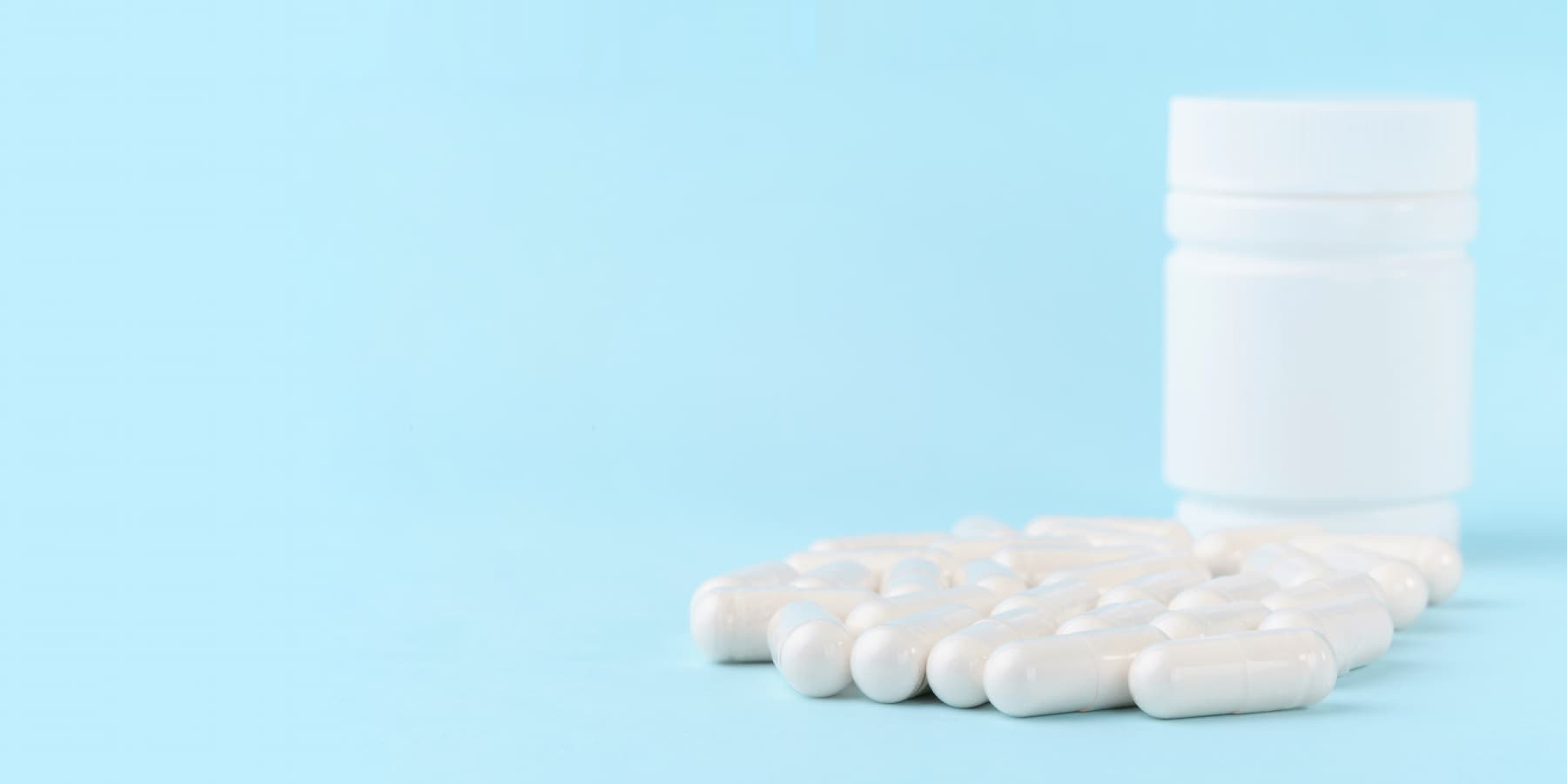
Chondroitin helps the joints and other elements of the body.
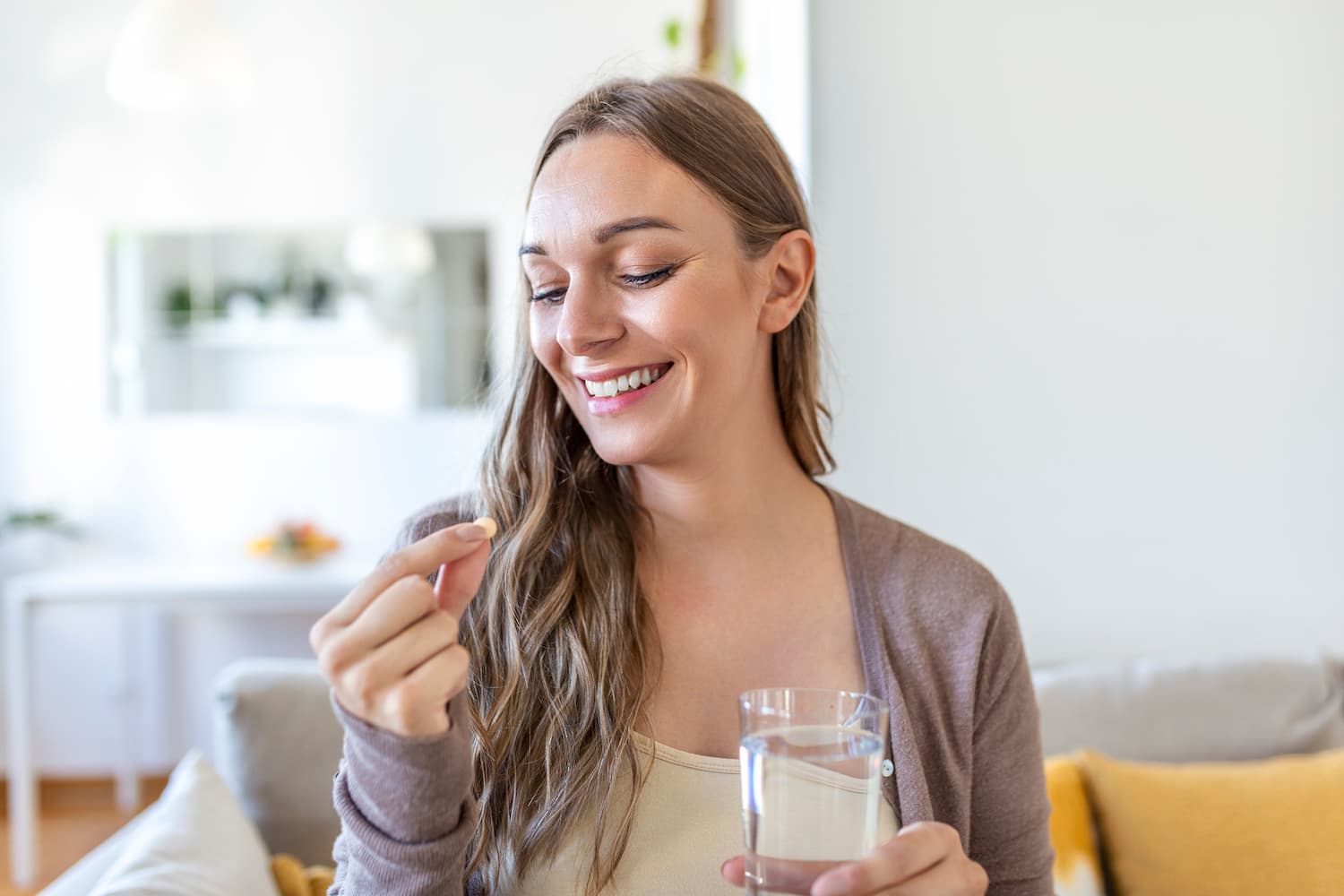
Glutathione is one of the most potent antioxidants for supporting the body's health. Find out how it works and where to get it from.

See why hip joints hurt and how to treat their ailments.
